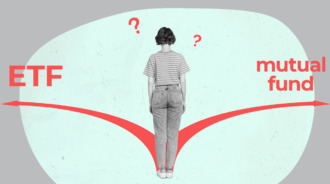

Few phenomena challenge conventional monetary policies regarding macroeconomic dynamics as profoundly as liquidity traps. These are periods of economic stagnancy, characterized by nearly zero interest rates, rendering conventional means ineffective in reviving economic growth. The paradox of this phenomenon lies in its ability to transform economic principles, such as the inclination of individuals to hoard cash and the impact of deflationary expectations.
We want to delve into the anatomy of liquidity traps and their meaning in Hindi, English, or other languages and unravel the complex web of factors and specifics contributing to their emergence. We will also explore the strategies that can be employed to navigate their waters by first examining historical instances and connecting them to modern economic thought.
Economies are increasingly susceptible to these circumstances and phenomena in an interconnected global landscape, so understanding what a liquidity trap is is crucial for policymakers and economists.
What Is a Liquidity Trap?
When we have an economic scenario where interest rates are pushed to really low levels, yet monetary policy isn’t enough to stimulate economic activity, we call that a liquidity trap. It’s a situation where people hold onto their money in its liquid form (in other words, cash) rather than investing it despite the interest rates being nearly zero. This goes against the traditional economic assumption we make that lower interest rates should cause an encouragement to spend and invest.
We have a paradox where low interest rates don’t succeed in stimulating borrowing and spending. Economist John Maynard pointed out, “Monetary policy is pushing on a string”, which perfectly captures how ineffective traditional monetary measures are.
How a Liquidity Trap Occurs: Low-Interest Rates and Declining Money Demand
There is often an economic downturn as a result of a liquidity trap: central banks traditionally respond by reducing interest rates, and when these rates approach zero, businesses and individuals begin to believe that this is a sign of economic distress, causing them to hoard cash and avoid borrowing or investing. The increased demand for cash prevents money circulation and renders monetary policy tools ineffective.
“In a liquidity trap, individuals’ preference for holding money as opposed to other assets becomes nearly absolute”, – states Paul Krugman, Nobel laureate in economics, placing emphasis on the psychological aspect of this phenomenon. Individuals cling to cash due to the perception of uncertainty and the need for financial security.
Uncertainty and a pessimistic outlook cause this decline in money demand due to people becoming more risk-averse. They prioritize the security of liquid money over risky investments despite those investments offering higher returns. This then gets exacerbated by diminishing confidence in the future economic situation.
An acclaimed economist, Ben Bernanke, explains that “the public’s increased demand for liquid assets… reflects concerns about the return on nonliquid assets”.
The Dangers of Falling into a Liquidity Trap
A liquidity trap can have an immense impact and lasting effects on an economy. Governments lose an essential tool for stimulating economic growth during a recession since monetary policy is ineffective due to the avoidance of borrowing and spending. The absence of economic activity driven by demand can result in prolonged periods of unemployment, reduced consumer spending, and stagnant economic output.
Some additional dangers of falling into a liquidity trap include:
- Deflationary Pressures
Liquidity traps often lead to deflation, a sustained decrease in the price level of goods. This can be extremely damaging to an economy since it causes individuals to delay purchases in hopes of lower prices in the future. This delay causes further contraction of economic activity.
- Debt Burden
An individual’s debt burden increases as a result of a liquidity trap. This happens because the interest rates are already low. Since further reductions are ineffective, borrowers find it challenging to refinance their existing debts and take advantage of the lower rates. This increases the debt burden for households, businesses, and governments.
- Reduced Global Demand
A liquidity trap can cause a country to rely on external demand to support its economy. In a situation where multiple countries may be simultaneously struggling with liquidity traps, global demand could get significantly weakened, causing further economic challenges.
- Diminished Monetary Policy Effectiveness
Monetary policy tools are used by central banks, such as adjusting interest rates, to manage economic fluctuations. Liquidity traps make it so these conventional tools lose their effectiveness. As a result, central banks lose their mechanism to influence economic activity, making it necessary to look into unconventional means to do so.
- Risk of Entrenched Pessimism
A sense of pessimism about the economy’s situation clouds individuals, becoming deeply entrenched in public perception and affecting consumer spending and confidence for years. This happens especially when liquidity traps persist for extended periods of time. Despite managing the initial causes of the liquidity trap, this pessimism can last long before the economic environment returns to normal.
- Underutilization of Resources
There is a potential wastage of resources as a result of a liquidity trap. This occurs because the liquidity trap leads to the underutilization of resources such as capital and labor. This causes factories to operate below their full capacity, leading to production inefficiencies, which wastes resources.
- Reduced Business Investment
Liquidity traps cause businesses to become hesitant when investing in new projects due to uncertain economic conditions. This lack of investment leads to decreased productivity and can impact long-term economic growth prospects significantly in a negative manner.
- Fiscal Constraints
There might be a need to increase public spending for governments to stimulate economic activity. The problem with fiscal policies is that they are constrained a lot by high debt levels, political obstacles, or even external pressures, making these measures less effective.
“The experience of Japan…underscores the problems that can arise when monetary policy loses its leverage”, – explains former Federal Reserve Chair Janet Yellen. The Japanese economic struggle during its liquidity trap is a constant reminder of nations’ challenges when stuck in such situations.

Historical Examples of Liquidity Traps
The following examples will highlight how persistent liquidity traps in different economic contexts and eras can be. They give us a better picture of central banks’ and governments’ challenges when attempting to stimulate economic growth while being blocked by a wall of heightened uncertainty and risk aversion.
Great Depression (1930s)
During the Great Depression, the interest rates were extremely low, and economic activity remained subdued. This situation was described as a “semi-stagnation” by John Maynard, where individuals preferred to hold onto their cash due to fears of economic uncertainty. The struggle to stimulate demand led to a prolonged period of economic hardship.
Sweden’s Deflation (1930s)
Sweden’s economy faced a situation where deflation worsened the liquidity trap, and the central bank couldn’t stimulate borrowing and spending even with extremely low interest rates.
The Japanese Lost Decades (1990s)
A notable example of a liquidity trap can be seen in Japan, where, following the bursting of its asset bubble, its central bank reduced interest rates. However, the Japanese economy still struggled to escape deflation due to the constant high demand for cash.
Economist Richard Koo describes Japan’s experience as a “balance sheet recession,” where individuals and households prioritize paying down debt over borrowing and spending.
Global Financial Crisis (2008)
During the global financial crisis, central banks worldwide lowered interest rates to try and stimulate economic activity. These measures were somewhat successful in preventing a complete economic collapse. However, some economies faced difficulties escaping the trap of lowered interest rates and diminished consumer spending.
Switzerland’s Negative Interest Rates (2010s)
An example of a modern-day liquidity trap can be seen in Switzerland. The Swiss National Bank introduced negative interest rates in response to the appreciation of the Swiss Franc. This was done to discourage currency hoarding, but despite such an unconventional policy, the demand for Swiss francs remained strong.
Eurozone Crisis (2010s)
The Eurozone Crisis was when several European countries faced a liquidity trap. As a result of the crisis and sovereign debt concerns, multiple countries had low interest rates, such as Spain, Portugal, and Greece. These low interest rates were accompanied by reduced consumer spending, and despite the European Central Bank’s efforts, the impact on economic growth remained limited.
How to Escape a Liquidity Trap: Policy Options for Governments
Since traditional methods fail, unconventional policy measures are required to escape a liquidity trap. Governments tend to resort to fiscal policies to stimulate economic activity. “Monetary policy is generally less effective at very low interest rates”, acknowledges Jerome Powell, former Chair of the Federal Reserve. The following are some additional methods used to escape liquidity traps:
- Tax Incentives for Investment
Governments offer tax incentives so that businesses invest in capital goods and research and development. These incentives will allow companies to expand and bring modernity into their operations and services, resulting in job creation and greater economic output.
- Helicopter Money
This concept is where money is directly injected into the economy by distributing cash to households. The idea behind this is to stimulate spending and increase demand. The term “helicopter money” was coined by economist Milton Friedman – to imagine money being dropped from a helicopter to stimulate economic activity.
- Targeted Government Spending
Governments could focus on targeted spending programs that precisely address sectors needing support. Investing in infrastructure projects, for example, or renewable energy initiatives. These steps can create jobs and stimulate economic activity.
- Labor Market Reforms
Certain reforms can encourage workforce participation and productivity, which would positively impact economic growth. Examples are skill development programs, flexible labor markets, and measures to reduce structural unemployment.
- Innovation and Research Funding
Funds could be allocated to support research and development, leading to new technologies and markets, driving economic growth, and creating jobs.
- Currency Depreciation
A depreciation of the national currency in a controlled manner could make exports competitive and increase foreign demand for domestic goods. This approach would increase export revenues and attract foreign investments, stimulating economic activity.
- Social Programs
Providing support to vulnerable groups in the population and creating social safety nets could help maintain consumer spending. These safety nets would give individuals a sense of financial security, encouraging them to spend rather than save.
- Reducing Regulatory Barriers
Reducing bureaucratic hurdles can allow businesses to operate and expand more efficiently in an easier manner. This promotes entrepreneurship, which could potentially lead to greater economic growth.
- Combating Income Inequality
A more equitable distribution of wealth and resources would be beneficial in such a situation, which needs to be done by addressing income inequality. Introducing policies promoting fair wages and affordable healthcare can help increase consumer spending.
- Quantitative Easing
With quantitative easing, a central bank can purchase securities to reduce interest rates and increase the money supply. It was noted by former European Central Bank president Mario Draghi that quantitative easing “creates a direct channel for monetary policy when the interest rate channel is impaired.”
- Public-Private Partnerships
Collaboration with the private sector on infrastructure can allow private investment, as well as government funding. This approach minimizes government funds’ burden while increasing economic activity and job creation.
Tackling a liquidity trap is tough, and governments would need to adopt a combination of policy options. The main idea is to address the factors contributing to the trap – low consumer confidence, risk aversion, reduced demand, et cetera – while promoting strategies that increase spending and investment.
Conclusion
So, we delved into the details of what a liquidity trap is. It illustrates the complexity of economic behavior and how conventional economic theories still have limitations. Traditional expectations can be defied in times of uncertainty and pessimism, and policymakers must be prepared to face these times by exploring unconventional measures to counter the impact of a liquidity trap. The historical context allows us to navigate the intricacies of the global economy and its possible fluctuations.











